You can’t just use any wood in your campfire or stove. Some kinds are very toxic and can pose a health hazard when burned. Others just don’t burn very well, like green wood. Below you’ll find what kinds of wood should absolutely avoid (with pictures to identify), which types are not so great, and what to use instead.
The following types of wood are toxic and should be avoided:
- Poison sumac
- Edible fig trees
- Black cherry
- Chinese laquer
- Camphor tree
- Many ornamental trees
- Driftwood
- Plywood
- Pressure-treated wood
- Particle board
- Stained wood
- Rotton/moldy Wood
- Poison oak and poison ivy
But there’s more to it than that. Some woods are non-toxic and should still be avoided. Some woods shouldn’t be used in a wood stove. And some woods you should never, ever, cook on. We’ll get into it below.
By the way, as an Amazon Associate, I earn when buying qualified products through links on my site.
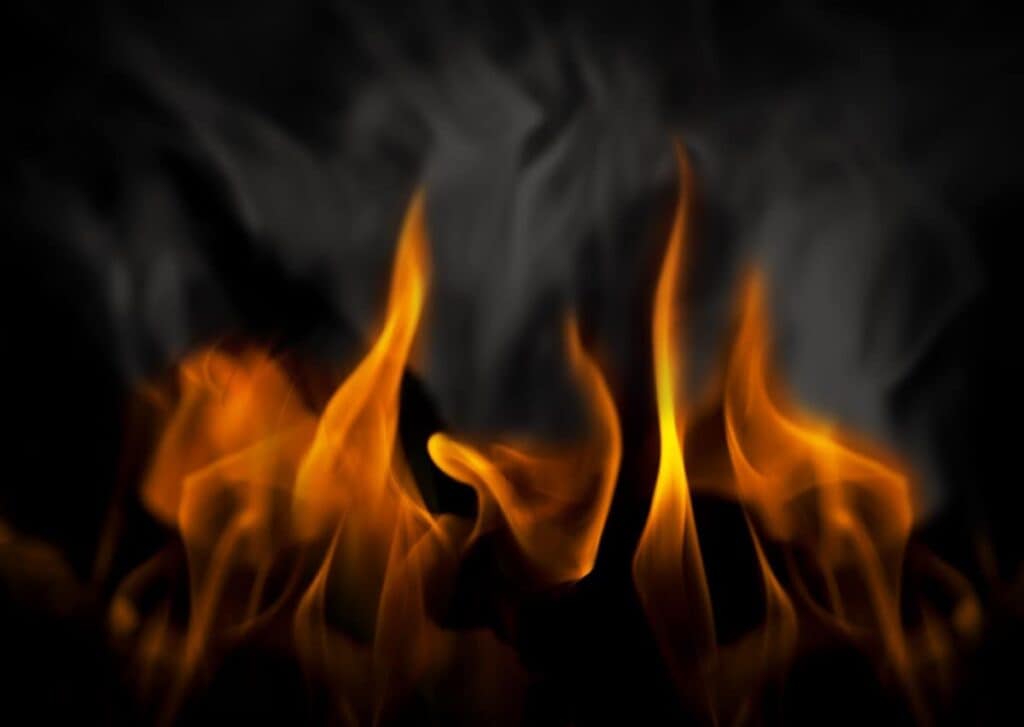
Key takeaways
Poisonous Wood You Should Avoid
Smoke from burning wood, whatever the type, is not good to inhale (see below), but some wood smoke is genuinely toxic and can cause rapid damage to your lungs. The following is a non-comprehensive list of wood that when burned can cause damage to eyes, skin, and your lungs:
Poison Sumac
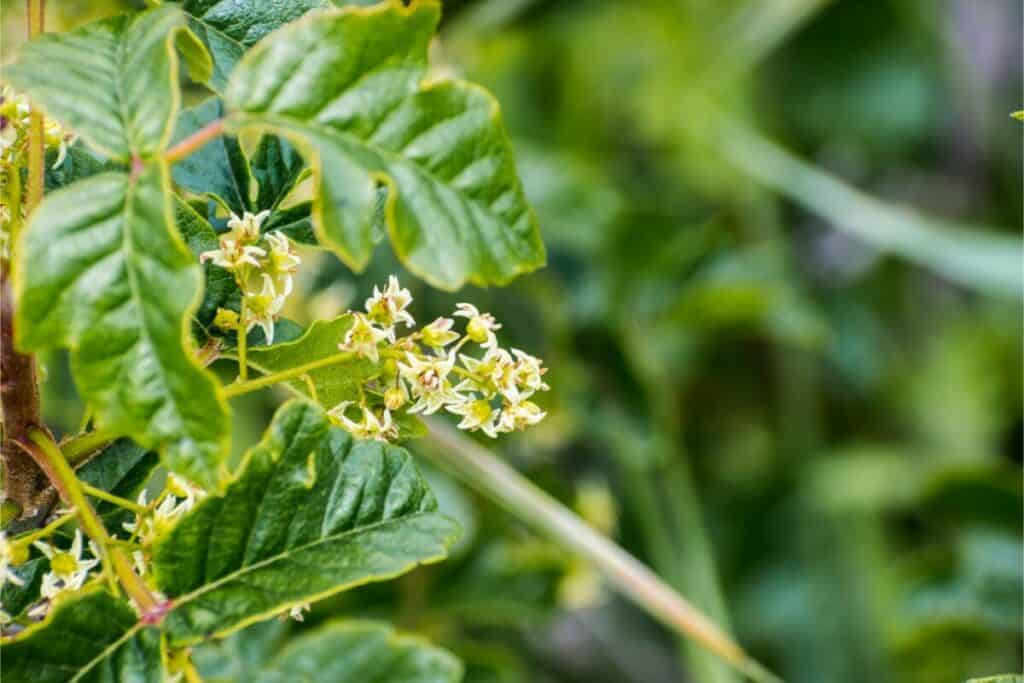
Poison sumac is even more deadly than poison oak and ivy, especially when burned. According to Wikipedia:
In the worst case, smoke inhaled by burning poison sumac leads to life-threatening pulmonary edema whereby fluid enters the alveoli.
Wikipedia
Poison Sumac looks like a small tree, and the leaves are in groups of 7-13 on one twig. The leaves are also directly opposite from each other and they also have a shiny smooth texture. For pictures check out WebMD.
Fig Trees
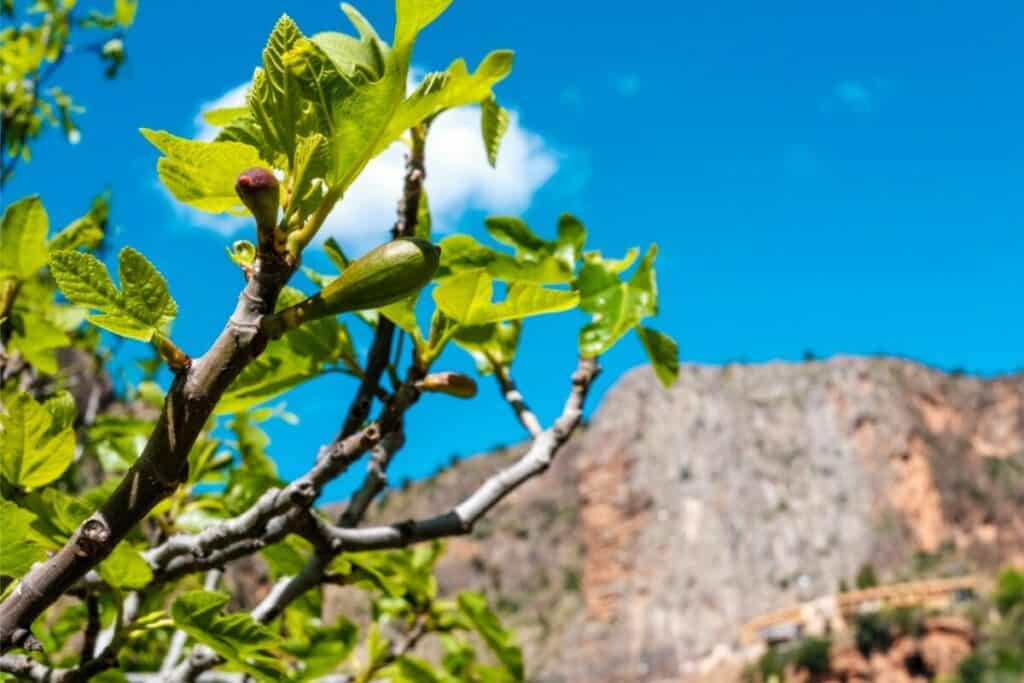
There’s some dispute on the toxicity of actually burning fig trees, but there is no doubt at all that the leaves and sap of the common edible fig tree are extremely poisonous. (source)
It could be that if the fig tree has completely dried out that it isn’t as toxic (or it could be that when burned that the toxic stuff could be gone). In any case, I’m not taking my chances. Skip burning fig tree wood.
Black Cherry (Wild Cherry)
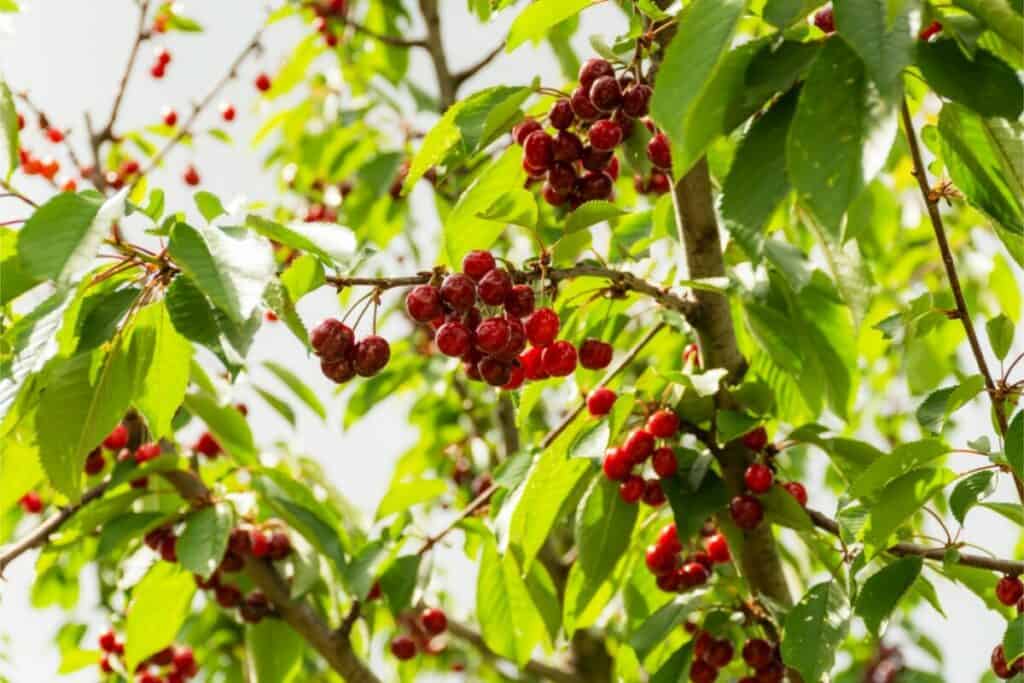
Black Cherry seems like it would be non-dangerous but is actually toxic, and according to Victor Lewitus in an article entitled called Poisonous Plants, says that it’s especially dangerous when burned.
You can see more information about Black Cherry here.
Chinese Lacquer tree
Another non-native tree that’s a popular ornamental is extremely poisonous and dangerous to burn. The smoke is known to cause an allergic reaction. (source)
Camphor Tree
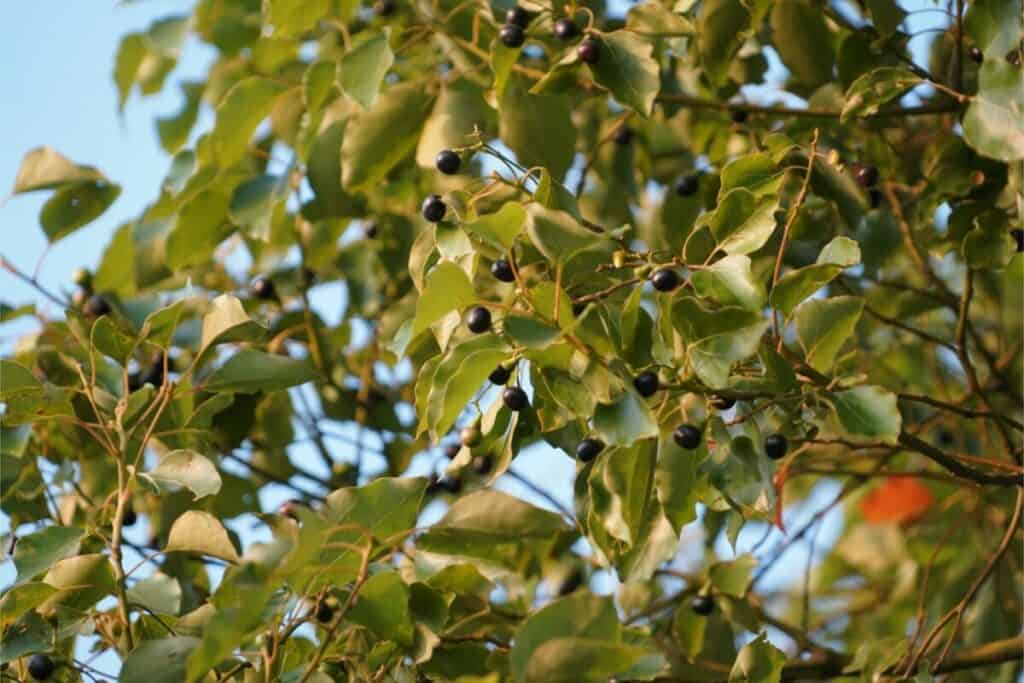
This tree is native to East Asia but now can be found in the United States and all over the world. Although it’s not as toxic as other trees camphor is harvested from the bark and is considered toxic (source) and is probably better to skip burning this where you might inhale the smoke (such as a campfire).
Trees In Your Backyard (ornamental Trees)
If you live in the United States, you are fortunate to have many common tree species that are relatively safe to burn. However, you may not have thought about this, but your backyard trees may actually be pretty dangerous.
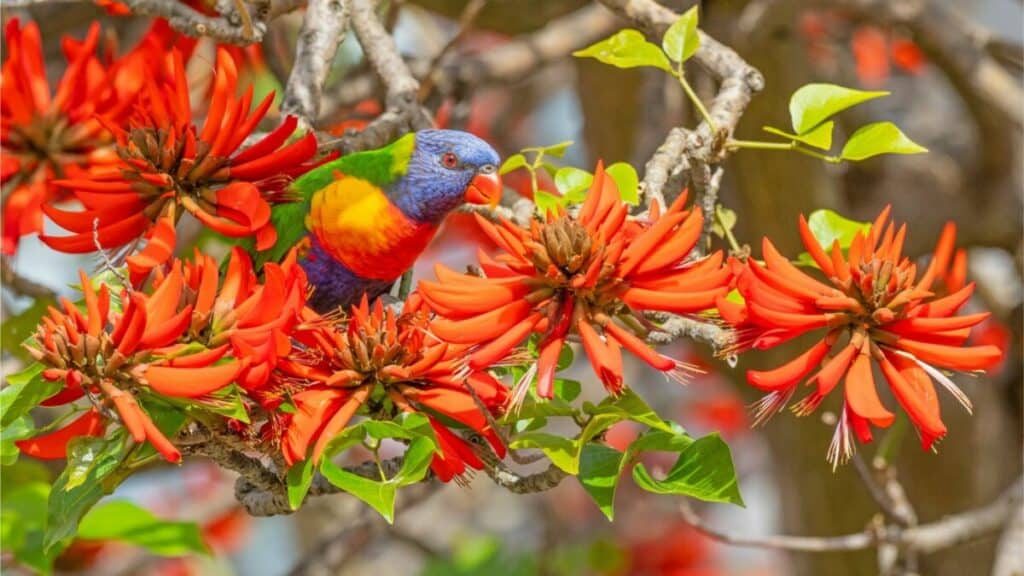
For example, the Bat’s Wing Coral Tree is native to Australia and has toxic leaves, fruit, and bark (and if you didn’t know, just about all plants and animals native to Australia are dangerous).
If you’re in the U.S., you might think–cool! I don’t have to worry about it!
The problem is that we buy trees from all over the world from our local nurseries. The Bat’s Wing Coral Tree is just one example of something you’d find at a nursery.
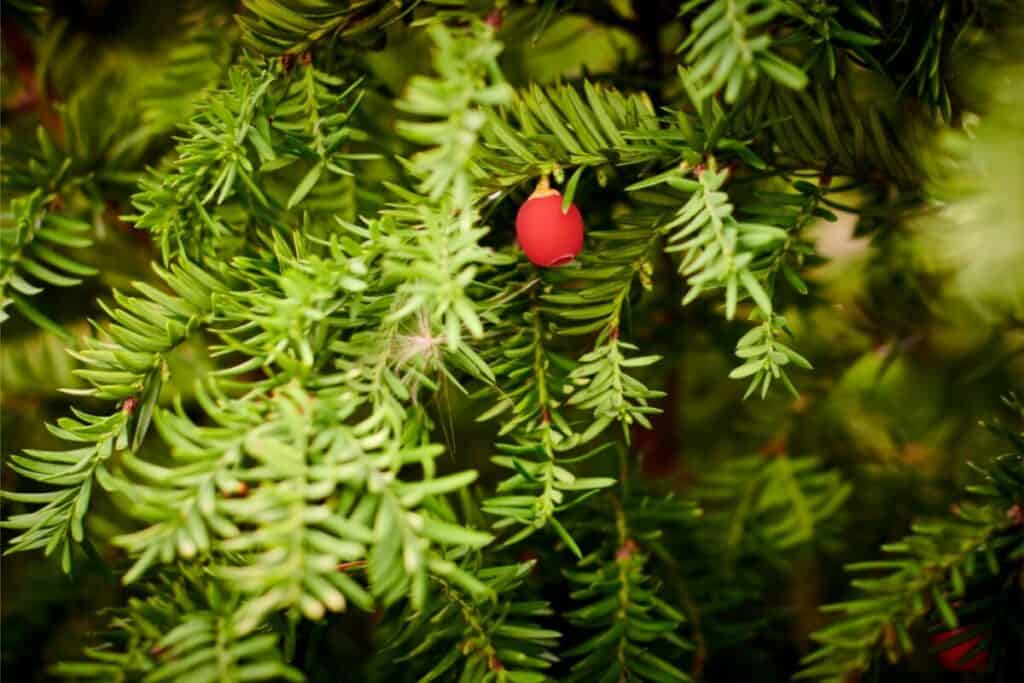
Another example is the yew tree. You see these trees all the time and they’re beautiful, but remember that ornamental trees are around for their looks and not for their practicality or safety.
So, although many trees are beautiful, unfortunately, many are quite dangerous to burn. If you don’t know what type of tree it is, be on the safe side and don’t burn ornamental trees.
Driftwood
According to the EPA, driftwood releases toxic or harmful chemicals when burned. MotherEarthNews states that burning driftwood releases Dioxin, which is an emission that doesn’t decompose in our bloodstream.
Plywood

Plywood is created by gluing several very thin pieces of wood together creating a super strong layer of wood. Plywood is an incredible invention, but the glue in the manufacturing process is toxic.
Plywood manufacturers often use urea formaldehyde (source).
Urea formaldehyde fume symptoms can bring on the following symptoms according to Wikipedia:
[…] watery eyes, nose irritations, wheezing and coughing, fatigue, skin rash, severe allergic reactions, burning sensations in the eyes and throat, nausea, and difficulty in breathing in some humans
source
Pressure-treated wood
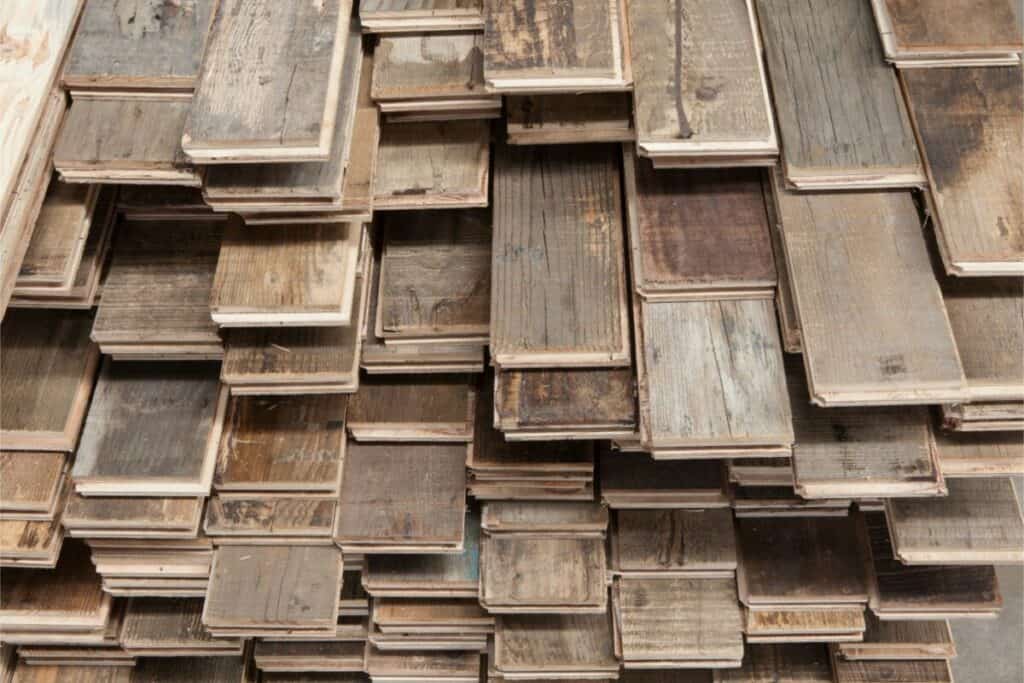
Pressure-treated wood is wood that has been injected with preservative chemicals at high pressures, so it is more resistant to decay. Home Depot states that one chemical commonly used in pressure-treated wood is alkaline copper quaternary.
According to the EPA, the fumes created during the pressure treatment release arsenic and other chemicals into the air.
Particle board
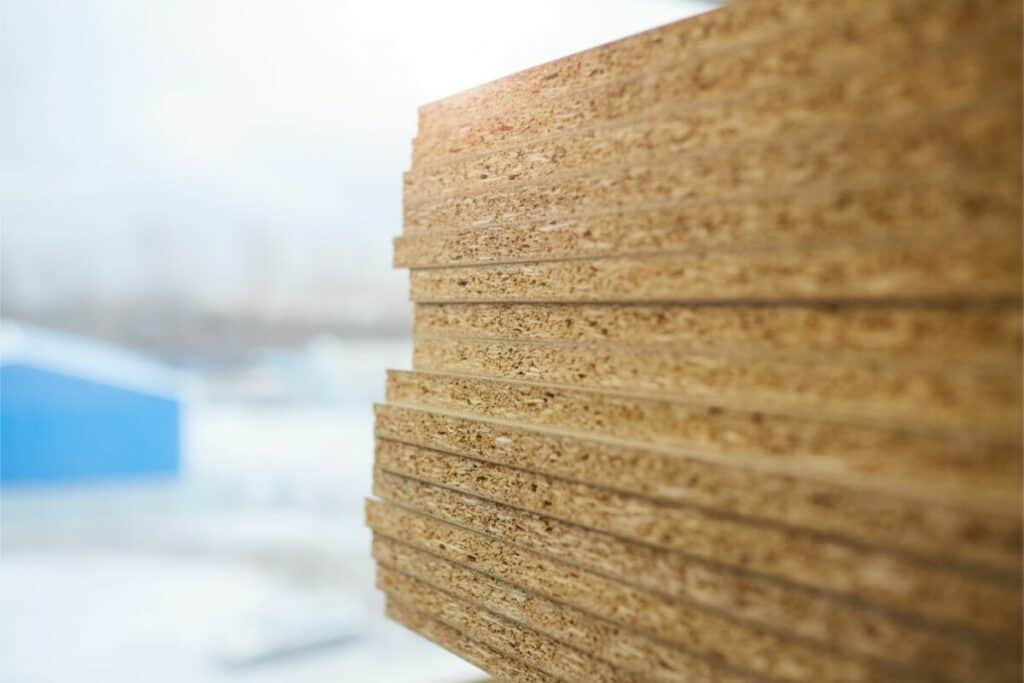
Particle board (also called chipboard) is basically wood chips glued together. They are often glued using urea formaldehyde, the same chemical used to make plywood which has these symptoms I talk about earlier. It’s most commonly used in cheap furniture.
Stained wood
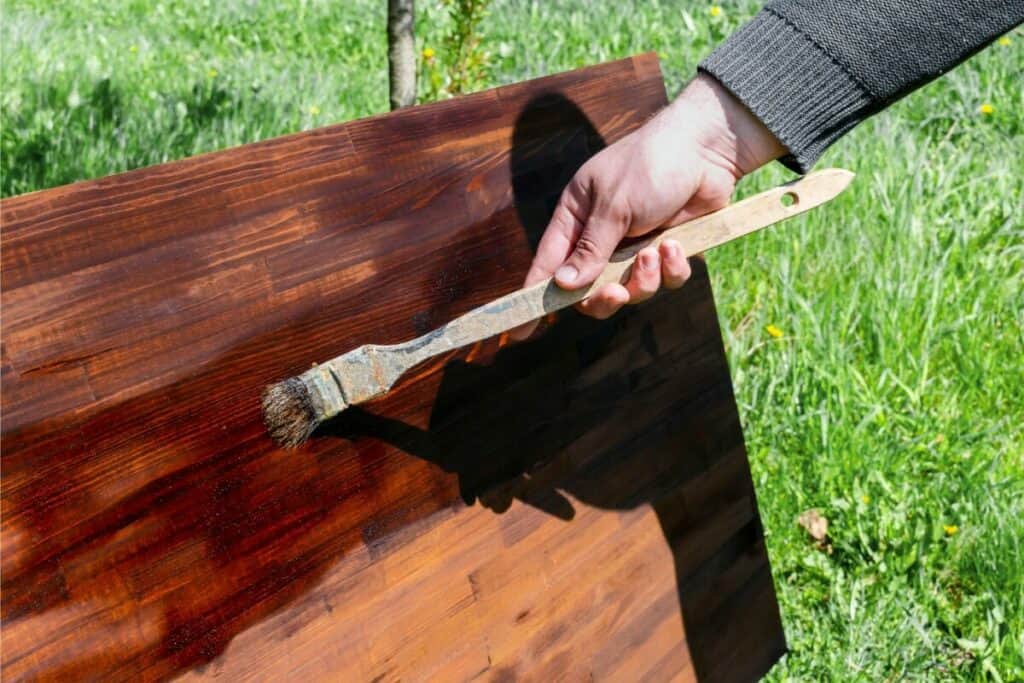
Wood stain is made from a binder, a pigment, and a solvent, with the solvent sometimes being mineral spirits, and the binder made from linseed oil.
Some sources like this one state that mineral spirits inhalation can cause breathing difficulty–I am not sure if it would matter if the stain has been dried on wood for a long time.
What’s more likely is that the wood itself has been treated in some other way so it will resist mold and last longer.
Rotten or moldy wood
Wood that could be completely safe to burn can be a different story if the wood is rotten.
Part of what makes wood rot is fungus and mold; the wood deteriorates quickly as microbes get energy from the decomposing wood.
Furthermore, rotten wood can often get spongy and absorb and retain water, making it poor firewood in any case.
Is burning rotten wood unsafe?
Rotten wood is full of moisture as it soaks up the water from the atmosphere and the ground around it. This will create a buildup of mold, and this is not something you want floating around by the food you are trying to cook. If only the outside of the wood is damp, but the heartwood inside is nice and dry, you may consider using this in your fire. If the whole piece of wood is soaked, then it is probably best to find a different piece of wood. Using drier wood is better for the life of your next fire as well as the lives of the people sitting around it.
Poisonous vines (Poison Oak and Poison Ivy)

Generally, you aren’t going to be burning vines, but if you are adding kindling with a bunch of brush, you need to be careful not to drag poison oak or ivy into the flames. Also, some poison ivy/oak climb up trees so they could be surrounding the wood you’re burning. Lastly, some can even look more like a shrub than a vine.
Remember, poison ivy and poison oak have leaves in groups of 3. The leaves can be shiny or dusty depending on the variety.
In fact, when it comes down to it, you’re better off not burning groups of weeds or soft non-grasses. You’d be amazed at how many poisonous plants are out there. For example, we have this weed called “Noseburn” in our backyard, and when you touch it your skin blisters in less than a minute.
My son and I have both found that out the hard way. Don’t burn weeds if you can help it.
Other Types of Firewood You Shouldn’t Use
Besides woods and plants that are toxic, themselves, there are some other things to be aware of:
- If you’re camping, don’t bring non-native wood (wood from 20-30 miles around the area). In fact, some parks are very strict on this point and will only allow wood that they provide to be burned. Travelling firewood can bring pests to new areas therefore spreading disease or other issues. (One example of this is the Bark Beetle, which is incredibly destructive and has destroyed 10s of millions of acres of forest)
- According to the EPA, materials like driftwood, plywood, cardboard, pressure-treated wood, rotten/moldy wood, and anything that is covered by a poisonous material (glue, plastic, rubber, asbestos, animal remains, and certain plant matter) are off-limits for burning.
- Some wood pallets (source) are treated with a preservative and are therefore unsafe to be burned. Furthermore, pallets leave behind nails and that’s not something you want to leave behind in the firepit.
Avoid green wood
One rule of thumb is to avoid burning green or fresh wood. If you are burning newly cut wood you are risking burning any accompanying vines, or the leaves themselves. Also, when the wood is fresh it has moisture and accompanying toxins. Even if there were toxins in the wood and leaves, if the wood has been dead for over 6 months it should be safe to use.
You probably aren’t a botanist and you probably won’t know every type of wood you are burning. You lower your risk factor a lot by waiting for your wood to dry out (can take 6 months or more) before burning.
I recently saw a little girl’s face that was red and swollen from an allergic reaction due to burning a pile of fresh wood. It’s impossible to know which exact tree that caused it; in any case, you run many more risks if you are burning freshly felled trees.
Besides the risk of toxins, fresh wood puts off so much more smoke and doesn’t burn very well, which isn’t very fun at all to be around.
Avoid burning these in your fireplace
- Pine: While it can be used as kindling, pine is resinous and can emit a lot of soot, leading to dangerous creosote buildup in your chimney. It is not toxic if it’s properly dried (seasoned) for at least 6-12 months.
- Green or unseasoned wood: Needs to be seasoned for about 12 months. Burning it before it’s properly dried can cause excessive smoke and creosote.
- Plywood, particle boards, or treated woods: These contain chemicals that can release toxins when burned.
- Moldy Wood: Burning moldy wood releases toxic gases into the room.
Avoid burning these in your fire pit
- Treated wood and construction materials: Burning treated wood, deck lumber, painted or stained wood planks, and driftwood releases chemicals that can be toxic.
- Wooden pallets: Especially those treated with methyl bromide, as they can release toxic chemicals when burned.
- Pressure treated wood, railroad ties, and stained or painted wood: These should never be burned in your outdoor fire pit due to the release of toxic substances.
Safe Wood Types That Make Good Firewood
The best wood to burn for a campfire is one that is dead, wood that is locally available, non-driftwood, non-poisonous, and dry.
Oak, beech, elm, and cedar trees make for good firewood. Pine can smoke a lot and has a lot of sap, which isn’t a concern in a campfire but should be avoided for a fireplace (to avoid buildup of burned sap inside the chimney)
Most common and native dried hard and softwoods that you run into in the forests of Northern America will be safe to burn. But the key is that you should try to only burn dried wood.
Firewood is commonly broken down into two categories: hardwood and softwood. Hardwood is much denser than softwood, so they burn slower, hotter, and more intensely. This wood is best for creating a long-lasting fire for cooking; after, of course, the fire has been built up by softwood. Softwood is much easier to light than hardwoods, and they burn quicker with more smoke; making them perfect for starting a bonfire. Virtually all of the most common hardwood and softwood trees in North America are safe to burn.
One thing to note is that it’s only relatively safe. Inhaling wood smoke has its own negative effects even if they aren’t toxic.
If you’re going camping, the easiest thing to do is just buy the firewood that’s at the campground. Many parks want you to use local wood, anyway, and this is an easy way for you to not have to worry about it.
Types of hardwood:
- Oak: These trees are extremely common in North America. All oak trees can be identified as such if they have acorns, lobed leaves that have rounded or pointed knobs extending out from their centers, and small, scaly pieces of bark that look like the back of a reptile.
- Birch: These trees are naturally found in cooler, northern climates, and they are all easily identified by their paper-thin peeling bark that is normally a mix of white, silver, and black. Their leaves are usually 2-3 inches long and oval-shaped with saw-toothed edges.
- Ash: Ash trees are easily mistaken for other types of hardwood trees, (which are all excellent for a slow cooking fire) such as black walnut, hickory, and elm. Ash trees have an “opposite branching arrangement” in their branches, meaning that the branches on both sides of the tree are directly across from each other.
If a branch has fallen off, check for a bud where the branch should have been. Ash trees also have distinctive “compound leaves” with 5-11 leaflets per compound. This means that 5-11 leaves come off of a single stem. Lastly, these trees have a diamond-shaped pattern bark that tends to be gray-brown.
Alternative hardwoods are eucalyptus, mahogany, and teak. All of these burn hot and clean and make good firewood too.
Read next: How much firewood do you need for camping?
Types of softwood:
- Cedar: Western Red Cedars have reddish-brown bark with vertical ridges up the tree, and cones that are reddish as well. Their leaves grow in pairs at a 90-degree angle, so that it creates a flat-looking structure. These trees are found mostly in the Pacific Northwest at a lower elevation.
- Pine: These trees obviously have needles instead of leaves, and these needles grow in clusters in either 2s, 3s, or 5s. They are also home to hard and thick cones, as opposed to other conifers that have flaky feeling cones.
- Larch: These trees prefer the colder climates of the high mountains and the northern parts of North America. They are one of the only coniferous trees to lose their needles in the fall, and they can be identified by their needle cluster and single cone combination per shoot.
Fungus and mold can be released while burning which would be dangerous to inhale. As far as what I’ve been able to research I haven’t found any conclusive evidence of someone getting sick from burning moldy wood.
Wood Types You Shouldn’t Cook On
Truthfully, there are a few strange species that you should not cook over, and I have included a link to a site with complete details on all of those different species down below in “Possible Side Effects”. There are not many risks with most of the common types of trees in North America. When we are trying to smoke or cook meat, hardwood is the best bet.
Hardwoods such as Oak, Hickory, Maple, Pecan, and Cherry are all fantastic types to use if you can get your hands on them, but you shouldn’t worry too much about any toxic buildup on your food. I would advise, however, that you stray from using most pine trees to cook with because the sap will get on the food and create a sticky texture.
If you would like some helpful starter information about cooking over a fire, we laid it all out and talked about lots of helpful tools and some caveats, you should check out our post about cooking over a fire if you’d like to know more.
If you have trouble getting the fire started, I actually use a couple of gadgets I think are really cool. You can check out what I like to use here.
Wood Smoke Can Be Pretty Toxic
Burning things such as Sumac, Oleander, Rhododendron, and Poison Ivy are all known to create toxic smoke and in some cases even cause lung damage. These are obviously not good materials to be burning in your next fire, but there also comes a risk from burning regular types of wood.
According to the Department of Ecology of the State of Washington, “Wood smoke contains tiny particles and gases that can have serious health effects when breathed…Much like cigarette smoke, wood smoke contains hundreds of air pollutants that can cause cancer and other health problems”.
Additionally, the EPA states that inhaling any kind of wood smoke increases your risk of lung infection.
When you have to burn wood, make sure you use the driest wood available. Living wood is prone to releasing much more smoke into the air, so stay away from greenwood. Also make sure to keep the fire burning hot by giving the fire room to “breathe”, or exposing it to more oxygen. Low-temperature fires will tend to not burn as well and actually create a higher level of smoke as they die down.
Possible side effects
For a complete list of the health concerns when it comes to choosing the right wood for your fire, feel free to check out this useful site. For now, here is a list of the possible complications with burning unknown wood:
- Irritant
- Nausea
- Giddiness
- Vomiting
- Sensitizer
- Nervous System Effects
- Asthma
- Sneezing
- Nose Bleeds
- Pink Eye
- Excessive Thirst
- Rash
- Lesions
- Swelling Skins
- Blisters
- Stomach Cramps
- Bronchitis
- Headaches
- Boils
- Wheezing
- Coughing
- Hives
- Fainting
Last Thoughts
When it comes to building a fire at your next campsite, whether it’s for heat, cooking, or simply for social reasons, make sure to create it inside of a prepared fire pit. Most campsites have these set up for you, but at some primitive sites you might have to create one by building one by making a small circle of rocks away from anything flammable.
Even the type of rocks you choose for your fire could be dangerous! Rocks actually explode! It’s a well-documented phenomenon. If you want to learn which rocks are safe to use for a campfire, check out our post here.
Most sites will have collections of wood ready for you to use, but be prepared to scavenge for more scrapes of dry wood if necessary. Take some time to study the types of hardwood and softwood trees that were listed out so that in a pinch you can gather the best wood for your next adventure.
